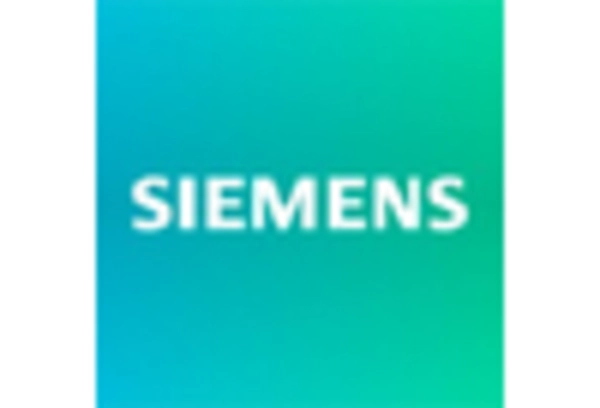Growing Demand for Robotics
The Motion Control Encoders Market is significantly influenced by the burgeoning demand for robotics across various sectors. Robotics applications, ranging from industrial automation to healthcare, require precise motion control to function effectively. The integration of motion control encoders in robotic systems ensures accurate positioning and movement, which is vital for operational success. Recent statistics indicate that the robotics market is expected to reach a valuation of over 200 billion by 2026, reflecting a robust growth trajectory. This increasing reliance on robotics is likely to propel the demand for motion control encoders, as they are integral to the performance and reliability of robotic systems. Thus, the Motion Control Encoders Market stands to benefit from this trend, as more industries adopt robotic solutions.
Expansion of Electric Vehicles
The Motion Control Encoders Market is also being driven by the rapid expansion of the electric vehicle (EV) sector. As the automotive industry shifts towards electrification, the need for precise motion control in electric drivetrains becomes paramount. Motion control encoders are essential for monitoring and controlling the position of electric motors, ensuring optimal performance and efficiency. With The Motion Control Encoders projected to grow at a compound annual growth rate of around 22% through 2030, the demand for motion control encoders is expected to rise correspondingly. This trend indicates a promising future for the Motion Control Encoders Market, as manufacturers seek to enhance the performance of electric vehicles through advanced motion control technologies.
Advancements in Sensor Technology
The Motion Control Encoders Market is experiencing growth due to advancements in sensor technology. Innovations in sensor design and functionality have led to the development of more accurate and reliable motion control encoders. These advancements enable better performance in various applications, including robotics, automation, and aerospace. The market for sensors is anticipated to grow substantially, with estimates suggesting a compound annual growth rate of around 10% over the next several years. This growth in sensor technology is likely to enhance the capabilities of motion control encoders, making them more appealing to manufacturers seeking to improve their systems. As a result, the Motion Control Encoders Market is expected to benefit from these technological advancements.
Rising Automation in Manufacturing
The Motion Control Encoders Market is experiencing a notable surge due to the increasing automation in manufacturing processes. As industries strive for enhanced efficiency and precision, the demand for motion control encoders has escalated. These devices play a crucial role in providing accurate position feedback, which is essential for automated machinery. According to recent data, the automation sector is projected to grow at a compound annual growth rate of approximately 9% over the next five years. This growth is likely to drive the adoption of motion control encoders, as manufacturers seek to optimize their operations and reduce downtime. Consequently, the Motion Control Encoders Market is poised for significant expansion, driven by the need for advanced automation solutions.
Increased Focus on Precision Engineering
The Motion Control Encoders Market is benefiting from an increased focus on precision engineering across various sectors. Industries such as aerospace, defense, and medical devices require high levels of accuracy and reliability in their operations. Motion control encoders provide the necessary feedback for precise positioning, which is critical in these applications. The demand for precision engineering solutions is projected to grow, with the market for precision instruments expected to reach significant figures in the coming years. This trend suggests that the Motion Control Encoders Market will continue to thrive, as companies invest in technologies that enhance precision and reduce errors in their processes.

















Leave a Comment